Matador Network's Blog, page 1060
July 9, 2019
Best things to do in Verona, Italy

If you’re planning a trip to Italy, Venice needs to be on your list of stops — it’s beautiful and should be seen at least once, but the sheer volume of tourists in the city is enough to drive anyone insane. When you need a break from the crowds, the flooding in Venice is getting out of control, or you just want a change of scenery, head out to Verona. You can easily reach Verona from Venice by train — it’s only an hour-and-ten-minute journey on the TrenItalia. Popularized as the setting in Shakespeare’s Romeo and Juliet, Verona has much more to offer visitors than Juliet’s Balcony. It’s an intimate yet lively town full of great food, beautiful sights, and a well-preserved history that makes it an ideal alternative to its busy neighbor.
1. Forget about the canals and marvel at the Arena instead.
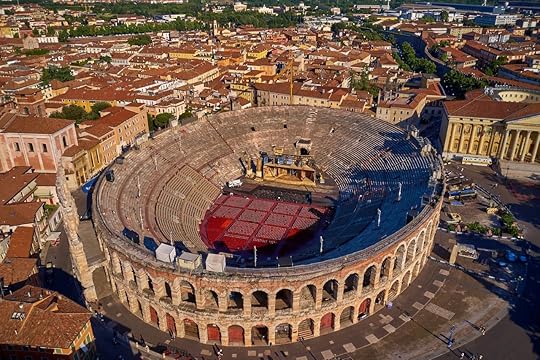
Photo: Andrea Berg/Shutterstock
While Venice is known for its canals and gondolas, Verona’s most striking attraction is the Arena. This Roman amphitheater was built in the first century, and it is unusual in appearance because it is built of pink, rather than white, marble. Additionally, the Verona Arena is rare because it is still a functional venue for opera performances and music concerts. Every summer, the Arena houses four operas, the Arena di Verona opera festival, and numerous independent concerts. In fact, the Verona Arena will host the closing ceremony of the 2026 Milan Winter Olympics. Of course, there does not need to be an event for visitors to see the Arena; you can tour the structure Tuesday through Sunday from 8:30 AM to 7:30 PM and Monday from 1:30 PM to 7:30 PM for about $11.25. Climb to the top of the concentric rows, and you will have breathtaking views of the entire old town.
2. Piazza Brá measures up to Saint Mark’s square.
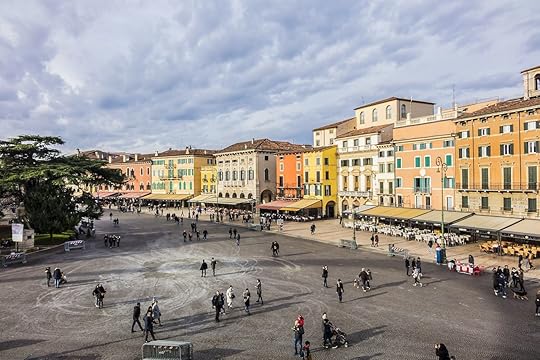
Photo: Kiev.Victor/Shutterstock
Piazza Brá is the central plaza in the old town of Verona. It is the first sight you will see when walking into Verona through the Porta Nuova from the train station. Piazza Brá surrounds the aforementioned Arena. It is a romantic setting with a fountain, greenery, and park benches. You’ll likely spot foreign student groups visiting the Arena, young couples holding hands, and locals drinking wine or espresso in the cafes. This is also a great spot to observe the architecture in Verona, which is a unique mixture of Venetian and Austrian influences.
3. Check out the ancient frescoes in San Giorgetto.
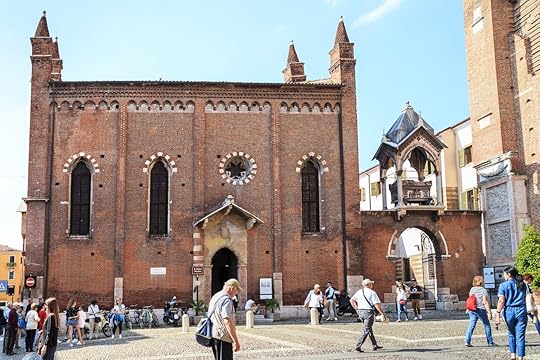
Photo: goga18128/Shutterstock
At the eastern edge of Corso Sant’Anastasia, there are two churches: San Giorgetto and Sant’Anastasia. Though it is worth your time to visit both, San Giorgetto is unusual in its breathtaking, centuries-old simplicity. This tiny, four-walled room is empty, save for faded frescoes adorning the walls and a free-standing column with visitor information. Completed in the early 1300s, San Giorgetto was originally built as a small chapel to the Teutonic Knights (some of whom are buried beneath the floor). In the early 1800s, the chapel was used by Napoleon Bonaparte’s soldiers as a stable for their horses. Standing inside San Giorgetto, you can all but feel the centuries of history swirling throughout this humble, unassuming structure.
4. Learn more about Italian art at Galleria Moderna Achille Forti.
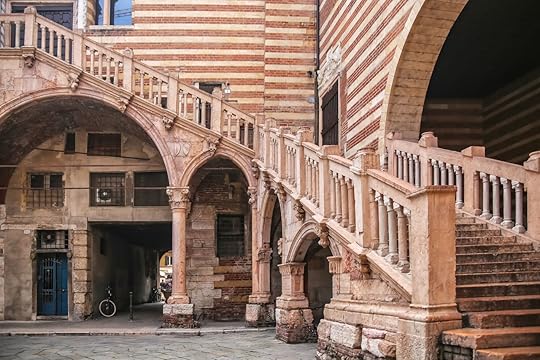
Photo: roundex/Shutterstock
Achille Forti was one of the main art collectors in Verona throughout the 20th century. Today, his collection is displayed within the Palazzo della Ragione, which is very close to the beautiful Piazza Erbe. This palace is sure to catch your eye with its striped, neoclassical exterior; delicate staircase; and refined moldings. Entry costs about $9.00. Inside, you’ll find a wide variety of paintings and sculptures from Italian artists, dating back from 1840 to 1940. The most famous painting within this gallery is Francesco Hayez’ Meditazione. Additionally, the palazzo contains the 17th-century Cappella dei Notai, a stunning vaulted chapel with biblical scenes. Regardless of your knowledge of art history, an afternoon at the Achille Forti Gallery is a beautiful, worthwhile experience.
Your gallery ticket also includes entry to the adjacent Torre dei Lamberti. This 12th-century tower offers stunning, panoramic views of the city. To reach the terraces and the belfry, you can climb a 368-step spiral staircase or take a transparent elevator that allows you to experience the architecture without the leg pain.
5. Escape the crowds across Ponte della Vittoria.
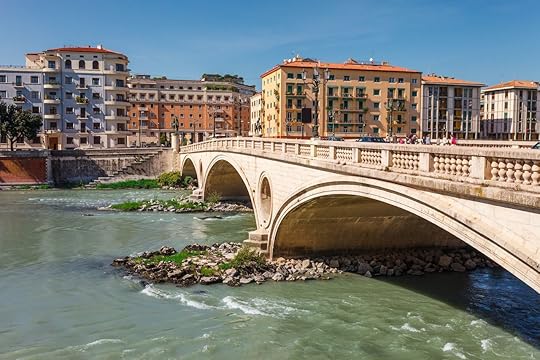
Photo: Oleg_P/Shutterstock
Verona does not equal the volume of tourists in Venice, but if you feel the need to find a quiet place to sit, walk across the Ponte della Vittoria and onto Via IV Novembre. On the left-hand side of the street, you will find Elk Bakery and Ziga Bar. Either one is a perfect spot to sit and grab a cappuccino in peace — you don’t get that in Venice.
6. Check out the Castelvecchio Museum.

Photo: Javen/Shutterstock
The Castelvecchio Museum, located on the banks of the Adige River, contains a collection of sculptures, paintings, ancient weapons, ceramics, gold work, and miniatures, ranging from the sixth to the 18th century. However, the most interesting part of this museum is the building itself: a renovated medieval castle. The Castelvecchio was originally built between the 1350s and 1370s, and it is a minimalist, imposing Gothic structure made out of red bricks. The Castelvecchio was restored between 1959 and 1973, with the objective of tastefully applying modern sensibilities while preserving the castle’s history. If you visit the museum, you can tour this unique fusion of new and old, which is somewhat more interesting than the actual museum displays. Castelvecchio Museum admission is about $6.80.
7. Sample Veronese food without ceremony.

Photo: Scapin 1935/Facebook
In Verona, you can pretty much enter any restaurant and expect Italian culinary excellence. Gastronomy Scapin allows you to sample a wide variety of Veronese food without bombast or frills. Inside, you’ll find a wide selection of Italian wines, a delicatessen, and a display of fresh dishes prepared in house. You can purchase timballos, baked pasta, parmigiana, cooked veggies, cheeses, fish salads, burrata, prosciutto, and more. Gastronomy Scapin allows you the option to either dine in its low-key kitchen or purchase food for takeaway.
8. Visit the otherworldly Scaliger Tombs.
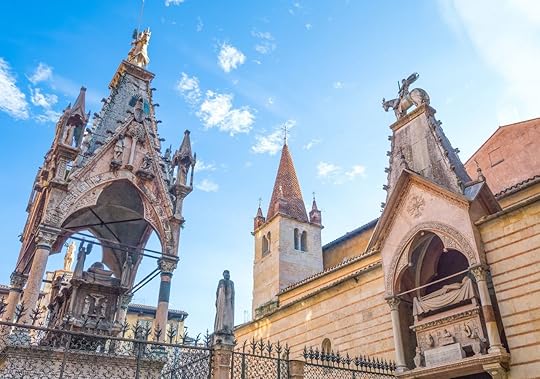
Photo: Gimas/Shutterstock
The Scaliger Tombs of Verona are a funerary complex, built by the Scaliger family to house the bodies of their most distinguished family members. The Scaligers ruled Verona from the 1200s to the end of the 1300s — in fact, they were the ones who built the Castelvecchio.
The tombs are enclosed by a wrought-iron fence, but they are tall enough that you can view them from the streets. The five tombs are built in the Gothic style, somewhat reminiscent of the spires atop St. Mark’s Cathedral in Venice. These peculiar, pink-and-white-marble structures simultaneously feel fragile and eternal; the carved figures and patterns are ornate and delicate, but they also carry an imposing, weighty quality. You’ll have to see for yourself — you can find the Scaliger Tombs on Via Santa Maria in Chiavica, just outside of Piazza dei Signori.
9. Get lost in the old town.
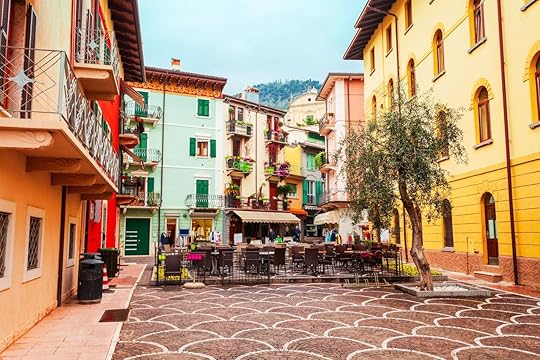
Photo: saiko3p/Shutterstock
Unlike Venice and its many narrow streets, Verona is a rather intuitively navigable city, flanked by the Adige River and Porto Nuova. Leave your map in your hotel room for a couple hours and just get lost in the winding streets (you will be able to find your way back, trust us). Try to notice things you don’t usually notice, from the shape of the cobblestones to the designs of the medieval window shutters.
10. Visit the flea market in Piazza San Zeno.

Photo: frantic00/Shutterstock
On Sundays, the square in front of the Basilica di San Zeno Maggiore (also worth wandering into) transforms into an open-air flea market. Stop by and you’ll find antique lamps, costume jewelry, clothes, paintings, cigarette tins, furniture, rugs, and many other fun knick-knacks. If you’re good at haggling, the more power to you. Remember, most of the vendors are local, so learning a few key phrases in Italian would be useful before you decide to go. 

More like this: How to order coffee in Italy without looking like a tourist
The post 10 amazing experiences that prove you should trade Venice for Verona appeared first on Matador Network.

Best summer vacation ideas

Maybe we blame “influencers” a little too much.
Okay, probably not, but the blame for overtourism can’t lay solely in their selfie-snapping hands. It takes a world of people to make a destination painful to visit, and if it wasn’t for throngs of people flocking to the same places their friends went, overtourism might not be an issue. Perhaps the key in keeping the crowds down is finding other, comparable destinations that offer the same sights, food, and foreign experiences without the masses. We conferred with the editors from Hideaway Report, and they offered up some worthy alternatives to seven of summer’s most crowded places.
1. Instead of Amsterdam…visit the Hague.
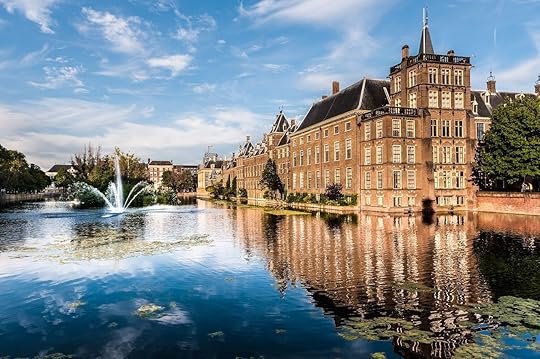
Photo: Brianmorgan56/Shutterstock
The canals, floating bridges, and quaint cafes of Amsterdam might seem an inviting place to spend the summer, but bear in mind most of the Netherlands’ 18 million annual visitors end up there. For the same culture, architecture, and centuries-old history, head to the Hague. The seat of Dutch government is the country’s most international city, home to over 100 different ethnic groups as well as the International Criminal Court.
Like many government seats, the Hague is also awash in world-class museums like the grand Mauritshuis museum, home to Vermeer’s “Girl with a Pearl Earring.” There’s also an Escher museum, the ultra-modern Gemeentemuseum, and the Madurodam — a collection of scale miniatures of Dutch landmarks. While it might not boast the hash bars and red-light districts of its more-famous neighbor, it does have one thing Amsterdam never will: a beach! Head to Scheveningen or Kijkduin and spend the afternoon away from crowds, breathing fresh sea air.
2. Instead of Prague…visit Bratislava.
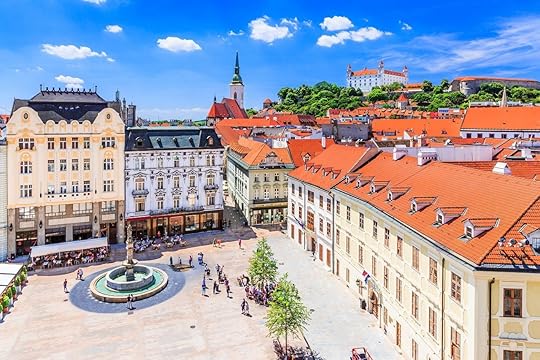
Photo: emperorcosar/Shutterstock
With crazy-cheap discount flights from the rest of Europe, Prague has become the top Eastern European stop for pretty much anyone taking an extended Euro trip. Sure, the beer is cheap, but it tastes a little better when you don’t have to fight mobs to get it. For that same Baroque architecture and cheap beer experience, head to the Slovakian capital of Bratislava, about an hour from Vienna by train.
The main square of the city is full of energetic bars and relaxing cafes, every bit the Eastern Europe you’d travel to Prague for. An added bonus: Slovakia is gaining international recognition for its wineries, and just a short drive out of town you’ll find spots like Vino Matyšák and Mrva & Stanko, where you’ll find first-rate bottles for half of what they’d cost in Napa. You can also hike a few hours from the city through thick forest to Devin Castle, a trip that feels like stepping smack into the middle of an old fairy tale.
3. Instead of Mallorca…visit Menorca.
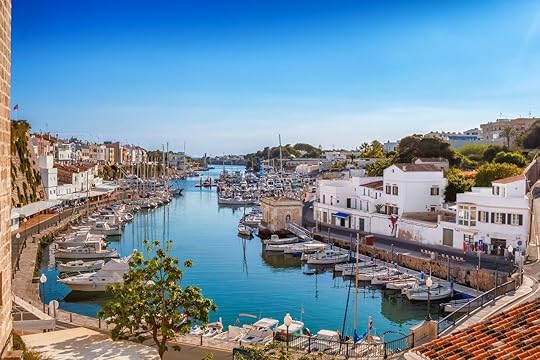
Photo: tuulijumala/Shutterstock
Try not to get confused by the similar sounding names, and you’ll find a peaceful, relaxing vacation in Spain’s Balearic islands. Mallorca has become overrun with sun-seeking Europeans, and the beaches and restaurants in Palma become almost impossible to navigate during the summer. But about a short ferry ride away sits Menorca, where you can sun yourself under an abandoned castle at Cala Mesquida, or hide on white sand in a hidden cove at Cala Trebaluger.
The island is also famous for its gins, so after a hard day in the sun, stop in for a tasting at Xoriguer. Also on the drinking agenda: Cova d’en Xoroi, a bar set in cliffside caves with spectacular views of the water. You can also stop in for a wine and cheese tasting at Hort Sant Patrici, or peruse the historic buildings in the old capital of Ciutadella.
4. Instead of Santorini…visit literally any other Greek Island.

Photo: Michael Paschos/Shutterstock
Those picture-perfect Instagram posts of white cubist houses lining the island shore don’t show the 15,000 or so cruise ship passengers that clog up Santorini on many summer days. Crowds actually got so bad that the Greek government banned mule tours where the animals were carrying more than 100 kilograms. But the Greek islands aren’t limited to Santorini. In fact, there are over 6,000 Greek islands, many of which have never seen a cruise ship.
The best Greek islands to visit are probably ones you’ve never heard of, so let us throw you some suggestions. If you’re into glamping on volcanic rock formations, check out Lemnos, with nature and geography similar to the Caribbean. Kythnos is fairly accessible from Athens, and offers the same cliffside architecture and clear blue water as Santorini. For deserted beaches that feel like your own little slice of paradise, try Koufonisia or Milos. Or check out the colorful streets and friendly locals in Karpathos.
5. Instead of Iceland…visit the Azores Islands.
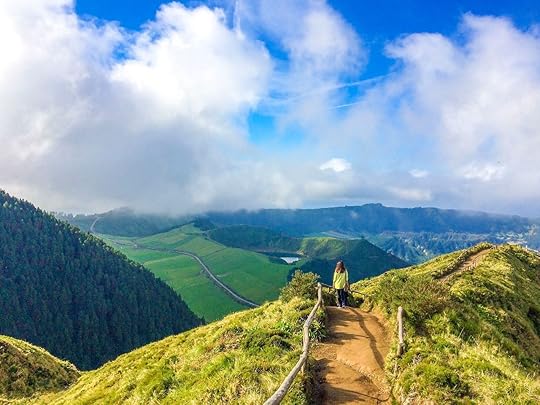
Photo: Olga Chiorescu/Shutterstock
Iceland might be a natural wonder full of lava fields, steaming volcanoes, and epic glaciers. But it’s now also full of our busloads of tourists, who might be lovely people but don’t really add to the whole appreciating-nature-in-quiet experience. Also, it can be a little cold. And a lot expensive. For all that volcanic action with warmer weather and lower prices, head to the middle of the Atlantic Ocean — to Portugal’s Azores Islands.
This far-flung archipelago offers some of the best diving in the world, with an underwater museum off the main port in Terceira and reefs surrounding São Miguel. These volcanic islands also have plenty of steaming wonders, like the town of Furnas where you can eat corn boiled in the earth and drink tea made with volcano water. Azorean scenery is no slouch either, where a hike to Sete Cidades has you overlooking a volcanic caldera with blue and green lakes. The Azores is conscious of overtourism, too, and even though Delta began nonstop flights from JFK Airport last year, the islands still don’t feel overrun.
6. Instead of Beijing…visit Hangzhou.

Photo: 4045/Shutterstock
Beijing being crowded is about as big of news as Kanye West saying something ridiculous, but since many people can’t list more than two destinations in China, Beijing still ends up on everyone’s bucket list. To get a better sense of China’s cultural history in a far more easy-breathing environment, take the train an hour from Shanghai to Hangzhou. This lakeside gem is one of the greenest cities in China, so beautiful that Chairman Mao kept a villa there and left it nearly untouched during the revolution.
Today it’s a country retreat for Shanghai’s nouveau-riche, with a trail along the water where you can run, bike, or stroll under lakeside willow trees. The city’s ancient architecture is equally as beautiful, with relatively uncrowded spots like fourth-century Buddhist temple Lingyin Si and the 12th-century Six Harmonies Pagoda. Relatively being the key word; the city still has seven million people and 21 million in the greater metro area.
7. Instead of Yosemite…visit Joshua Tree.

Photo: Lorcel/Shutterstock
California’s famous traffic congestion should, theoretically, be limited to its cities. Not the case when you head into Yosemite on any summer weekend, when it seems nearly everyone in America takes a road trip there. Not that it makes the park any less spectacular, but if you want to experience other wonders of Californian nature, venture out to the desert and into Joshua Tree National Park.
A surreal desertscape replaces the waterfalls and rock faces of Yosemite with trippy boulder piles and spectacular sunsets. Joshua Tree is also central to one of the quirkiest parts of the country, where you can visit Pappy and Harriet’s in Pioneertown and possibly catch a big-name act playing a small-town saloon. Or peruse a full-scale outdoor desert art museum, as well as the smallest museum in America, at the world-famous Crochet Museum. The park might not have the world-famous features people travel the world for, but it can be a heck of a lot more fun. 

More like this: These are the cheapest beach towns in America
The post Perfect alternatives to 7 of the summer’s most crowded destinations appeared first on Matador Network.

Travelers eligible for compensation

If you experienced travel disruptions between Memorial Day and/or Labor Day weekends last year, you may be entitled to compensation from the airlines.
According to AirHelp, an organization that advocates for air passenger rights, over 107,900 US passengers flying to and from the European Union between those dates could receive up to $700 in compensation if they experienced cancellations or long delays — and they have three years to claim it.
European law EC 261 requires airlines to compensate passengers on flights into and out of the EU on a European airline for delays over three hours, as well as for denied boarding and cancellations. If the disruption was caused by circumstances beyond the airline’s control, however, like bad weather, terrorism, or safety concerns such as air traffic control issues, airlines are exempt from this rule.
To determine your eligibility for compensation, simply enter your flight information on AirHelp’s website. You are also able to file a claim directly on the website if you end up being eligible. 

More like this: 7 rights all air passengers have and should know about
The post Over 60,000 travelers are eligible for airline compensation for flight disruptions last year appeared first on Matador Network.

Things bartenders have to explain

Most people aren’t intentionally difficult — they’re simply unaware. And never is it more noticeable than at a bar, where a few drinks prevents anyone from thinking clearly. From never ordering a mojito in a busy bar to knowing that last call means the last call, here are six things bartenders always have to explain to civilians, even when we don’t want to.
1. Never order a mojito.
Unless you’re at a mojito bar or in Cuba. Mojitos take twice as long to make as an average cocktail, with the extra muddling and time it takes to carefully clean mint out of our shakers. Plus, they look delicious, so as soon as one person orders one, the whole bar suddenly wants Mojitos as well. If it’s a slow night, it’s not a problem, but if the bar is slammed, drinks like Mojitos slow down service. It might not seem like your problem as a customer, but it is one of the reasons it takes so long to get your drink on a Saturday night.
2. Keep your hands out of our garnish station.
And while you’re at it, don’t absentmindedly fondle straws meant for other guests. This seems so obvious from the perspective of both hygiene and common decency, but you’d be surprised how often it happens. Every bar should have a dart board and Jenga to distract the drinkers from mild acts of vandalism.
3. Give your bartender a two-minute grace period.
Shitty bartenders do exist, as do inattentive servers and condescending maitre d’s, but for the most part, service professionals are doing the best they can. When you walk into a bar and see that the bartender is busy, give them a minute or two to make their way over to you. They aren’t ignoring you, they’re usually doing five things at a time. Don’t reach behind the bar and grab what you think is a menu. Don’t shove dirty glasses out of the way before we’ve had a chance to clean. Don’t demand water from across the bar (unless it’s an emergency). Within two minutes, we will acknowledge and serve you. If we don’t, then speak up. But the quickest way to piss off a bartender is not giving them the time to do their job.
4. Ask for guidance, don’t ask for a mind reader.
Bartenders are happy to make you something off menu, but we need some parameters. If you want “bartender’s choice,” give us a spirit or a flavor profile to work from. Most bartenders love talking about booze and are excited to introduce curious clientele to new spirits. But it makes it much easier for us if we have a sense of what you’re looking for.
5. “Last call” really means “get out.”
Not immediately, but do drink with haste. Especially if the lights go up and the music goes down. This applies more for restaurants and cocktail bars that don’t have bouncers rounding up the stragglers. We will ask you to leave if we have to, but we’d prefer if you take the hint.
6. Bartending is a real job.
Bartending is a real career, with a specific skill set and a learning curve. Like most careers, there are different levels. A catering bartender is equivalent to little leagues and working an Irish pub. Managing a bar in a highly curated cocktail bar belongs to the major leagues. While much of the stigma of working in the service industry professionally has lifted, there are still moments when you have to assert the value of this profession. 

More like this: 6 signs you learned to drink behind the bar
The post 6 things bartenders always have to explain to civilians appeared first on Matador Network.

July 8, 2019
Trump 4th funded by national parks

On July 4, the National Mall in Washington, DC, played host to one of the largest shows of military might that the capital has ever seen. Armored tanks, parked in front of the Lincoln Memorial, served as the backdrop for an Independence Day speech by President Donald Trump, which was punctuated by a number of scheduled flyovers by military aircraft. The event was promoted as a tribute to our country’s power and was inspired by the president’s trip to a Bastille Day celebration in France back in 2017.
According to a report in The Washington Post, the bill for the event totaled at least $2.5 million — the overhead planes and tanks costing extra — with the money taken from the coffers of the National Park Service. Specifically, the report said funds derived from the fees visitors pay to access national parks and monuments were used to pay for the celebration.
The entire tally is added to the estimated $6 million in revenue the parks lost during the government shutdown from December 22, 2018, to January 15. The NPS generally keeps about 80 percent of that money, using it for maintenance, restoration, and amenities. To skeptical observers, the event seemed hypocritical, directly countering the notion of fiscal conservatism that Trump and the Republican party trumpet so loudly — given that the event constituted neither a necessary nor especially useful government service.
Throughout his term, President Trump has made no secret of his desire for a military spectacle. He originally hoped to host such an event for Veterans Day in 2018 but pulled the plug after media reports showing a $92 million price tag drew the ire of the public. What has stood in the way of the event coming to fruition has always been the fact that someone would have to pay for it — and that someone would undoubtedly be taxpayers, many of whom would want nothing to do with a potentially partisan event. In fact, The Post report noted that VIP seats at the Fourth of July event were reserved for Trump donors and other high-profile allies.
In itself, a Fourth of July celebration featuring a speech by the sitting president likely wouldn’t have seemed excessive. But this one took place in addition to DC’s annual Fourth of July show. On the other side of the mall, the recurring, free-of-charge Fourth of July celebration on the National Mall took place as scheduled, with the National Symphony Orchestra and singer-songwriter Carole King performing alongside a fireworks show above the Capitol building.
Trump’s celebration added a second, simultaneous event viewed by many Democratic members of Congress, as well as some current and former military officials, as politicizing both the military and Independence Day. “Tanks aren’t props. They are weapons of war,” Democratic Senator Jack Reed of Rhode Island, who served in the 82nd Airborne Division, told the New York Times.
Many advocates for America’s national parks also expressed distress over the stripping of hard-earned funds from the parks that earned them. The Post reported that the money will likely be taken from small-sized parks around the country, including the Washington Mall. Those already concerned with the administration’s proposed budget cuts to the National Park Service, estimated at nearly $500 million in 2020, were quick to express outrage over the Fourth of July affair.
The National Parks Conservation Association and Democracy Forward issued a joint statement demanding that the Office of Inspector General of the Department of the Interior investigate whether or not the siphoning of NPS funds for this ticketed event was even legal.
“Siphoning off desperately needed money from our national parks to pay for a spectacle on our National Mall is both reckless and a breach of the public’s trust,” said Theresa Pierno, President and CEO for National Parks Conservation Association, in the release. “Taking money from national park visitor fees could also be illegal, and we urge the Inspector General to investigate this matter. Two and a half million dollars might not seem like a lot to this administration, but to a national park it’s everything. Fee dollars are meant to protect our parks’ irreplaceable resources and enhance visitors’ experiences, not fund a Presidential stunt.”
Though Congress has not approved the administration’s proposed cuts, the National Park Service currently struggles to fund its necessary costs for maintenance, training, and upgrades, of which visitor fees are a primary funding source. The estimated backlog on such efforts totals nearly $12 billion. 

More like this: Trump imposes new ban on cruise ships and organized tours to Cuba
The post Trump’s Fourth of July show took $2.5 million from national parks appeared first on Matador Network.

Best temples in Beijing, China
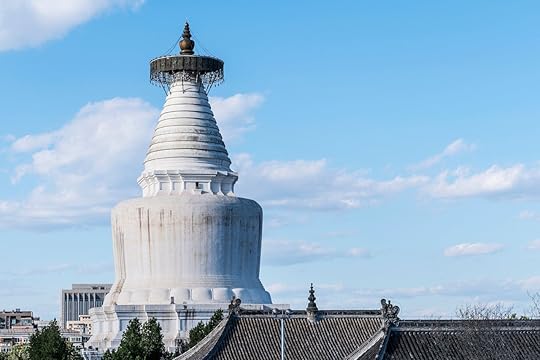
Temples hold important cultural and historical significance in China. Whether they’re Buddhist, Taoist, Confucian, or something of the like, there are myriad temples all throughout the country. In the capital city of Beijing alone, there are hundreds upon hundreds of temples.
Many Chinese temples are built with the concepts of harmony and symmetry in mind. While complexes can have buildings scattered around the grounds, there is almost always a central axis, a north-south pathway, on which the more important buildings lie. The buildings, statues, and other decor on either side of the central axis typically match the opposite side in perfect symmetry.
Visiting the temples in Beijing can provide a lens not only into the different religions and philosophies that people there follow but also into the different Chinese architecture styles, which reflect the dynasties in which they were built. Temple hopping can be draining, however, so spend your time wisely by checking out Beijing’s seven best.
1. Temple of Heaven

Photo: Hung Chung Chih/Shutterstock
Originally named the Altar of Heaven and Earth, the Temple of Heaven is the world’s largest existing building complex for offering sacrifices to heaven. While it was later renamed in 1534, a few years after new building additions, the original version of the complex was completed in 1420 along with the Forbidden City. The UNESCO World Heritage site was built as a place of worship where emperors, acting as a sort of intermediary between humans and heaven, would pay their respects to heaven and pray for good harvests. The complex’s layout was designed with this sacred purpose in mind, as well as on ancient beliefs that tied “numbers and spatial organization to beliefs about heaven and its relationship to people on Earth.”
There are 92 buildings with 600 rooms total, but if you’re pressed for time, there are three main areas you should focus on. All three are on the central axis, making it easy to hit them in one go. The first place you should visit is on the south end, the Circular Mound Altar, which was built specifically for sacrifices to heaven. The open-air altar is made up of three layers of marble with a round slate, named the Heart of Heaven, as the focal point. It’s also where emperors would pray for good weather and where winter solstice ceremonies were held.
The next place is the Imperial Vault of Heaven, a circular building where stone tablets used in harvest prayer and worship ceremonies are housed. The final place is the magnificent Hall of Prayer for Good Harvests, which is the complex’s main building and the one that most people will recognize on sight. This is where emperors would pray for good harvests; the 28 columns inside represent the four seasons, 12 months of the year, and 12 Chinese zodiac hours. Visiting in the morning provides the best chance at beating the crowds, and you’ll also get to see locals performing various exercises like tai chi and kung fu in the park.
Hours: While the park itself is open from 6:00 AM to 10:00 PM year-round, the main attractions are open daily from 8:00 AM to 5:30 PM during peak season (April to October) and 8:00 AM to 5:00 PM during off-peak season (November to March).
Price: Depending on whether you want a ticket to enter just the park or one that includes the park and the attractions, it’s 15-35 Chinese yuan ($2-5) during peak season and 10-30 ($1.50-4.30) during off peak.
Location: 1 Tiantan E Rd, Dongcheng Qu, China, 100061
2. Lama Temple

Photo: V_E/Shutterstock
A temple with a long list of nicknames — Yonghe Temple, Yonghe Lamasery, Yonghe Lama Temple, Harmony and Peace Palace Lamasery — Lama Temple is one of the most popular temples in Beijing, right up there with the Temple of Heaven. It was constructed in the late 17th century as the royal court for then-prince Yongzheng. When Yongzheng became emperor in 1722, the site gained imperial status, was renamed, and became a palace that he could stay in when he wanted to get away from the Forbidden City. The site went from palace to temple once the emperor passed and a new dynasty began, though the Chinese Civil War forced a 32-year closure until its reopening in 1981.
The five main buildings, on the central axis, are the Gate Hall of Harmony and Peace, the main entrance to the temple; the Hall of Harmony and Peace, the main hall with statues of the Buddhas of the Three Ages (present, past, and future) and statues of 18 arhats (people who have achieved nirvana), which represent protection; the Hall of Everlasting Protection, a series of connected buildings where Yongzheng lived when he was a prince and later used as a space for prayer; the Hall of the Wheel of Law, a space to read scripture and for ceremonies, and where 500 arhat statues made of different metals can be seen; and the Pavilion of Ten Thousand Happiness, with a wooden Maitreya Buddha statue so tall that it achieved a Guinness World Record in 1993.
Hours: Daily from 9:00 AM to 4:30 PM between April and October, and 9:00 AM to 4:00 PM between November and March.
Price: 25 yuan ($3.60)
Location: 12 Yonghegong St, Dongcheng Qu, China, 100007
3. Confucius Temple

Photo: Reuben Teo/Shutterstock
At around 220,000 square feet, the Confucius Temple in Beijing is the second-largest Confucian temple in China — with the largest being in Confucius’ hometown of Qufu. The temple was built in 1302 so that people could pay their respects to the philosopher and was used for that purpose until the early 20th century. It’s comprised of four courtyards along the central axis: the Gate of the Late Master, the Gate of Great Accomplishment, the Hall of Great Accomplishment, and Worship Hall. Inside the front courtyard, there are 198 stone tablets with the names of over 50,000 jinshis (advanced scholars) of the Yuan, Ming, and Qing dynasties.
Also noteworthy is the number of old trees found on the temple grounds; the most famous of these is the Touch Evil Cypress, which is several hundreds of years old. Legend has it that when an infamously corrupt official passed by the tree, it knocked his hat off, and it’s now believed that tree can differentiate between good and evil.
Hours: Daily from 8:30 AM to 6:00 PM between May and October, and 8:30 AM to 5:00 PM between November and April (during this period, it’s closed on Mondays).
Price: 30 yuan ($4.30), which includes entrance to the Imperial Academy next door
Location: 15 Guozijian St, Dongcheng Qu, Beijing Shi, China
4. Baiyun Guan

Photo: TK Kurikawa/Shutterstock
Also known as the White Cloud Temple, Baiyun Guan is one of the three “ancestral courts” of the Quanzhen sect of Taoism and home to the Chinese Taoist Association. It was founded in 739 AD and went through several renovations throughout different dynasties. Along the central path are four main halls — Yuhuang, Laolü, Qiuzu, and Sanqing — and at the entrance are three gates, each symbolizing one of the three worlds of Taoism: Desire, Substance, and Emptiness. Hidden among the grounds that are taken care of by 30 resident monks are three monkeys made of stone. Locals believe that finding all three and touching each of them signifies good fortune. It’s not particularly touristy, being more of a special pilgrimage site for Taoists, so visitors can wander the complex in peace. That being said, it’s popular during the Spring Festival that occurs during Chinese New Year festivities, when a temple fair is held on the grounds.
Hours: Daily from 8:00 AM to 4:30 PM
Price: Free
Location: 9 Baiyunguan St, Xicheng Qu, Beijing Shi, China
5. Tanzhe Temple
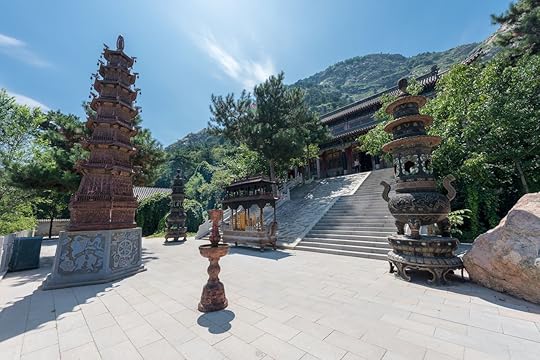
Photo: Kanokratnok/Shutterstock
After spending a few days in any urban hub, you’re bound to want a reprieve. At around 25 miles west from downtown Beijing, Tanzhe Temple gives visitors exactly that. Located at the foot of the Tanzhe Mountain in the Western Hills, the temple is surrounded by scenic nature to admire as you get a dose of culture and history. With a history going back over 1,700 years to the Jin Dynasty, Tanzhe is the oldest temple in Beijing — predating the city’s name of Beijing itself — and one of the earliest Buddhist temples in the city, if not the earliest.
The temple is divided into three areas: the central axis, the eastern section, and the western section. Most notable along the central axis is the Hall of Heavenly Kings, with six Buddha statues; the Grand Hall, the temple’s largest hall; and the Emperor and Empress trees, large ginkgo trees that are believed to have a new branch grow out of the root when a new emperor ascends the throne. The eastern section was used by the emperors during the Qing Dynasty for short trips away from Beijing while the western section holds various buildings for prayer, worship, and other dedications.
Hours: Daily from 8:00 AM to 5:00 PM between April and October, and 8:30 AM to 5:00 PM between November and March
Price: 55 yuan ($8), but for 80 yuan ($11.60) you can visit both this temple and Jeitai Temple
Location: China, Beijing Shi, Mentougou Qu, 108国道潭柘山
6. Miaoying Temple
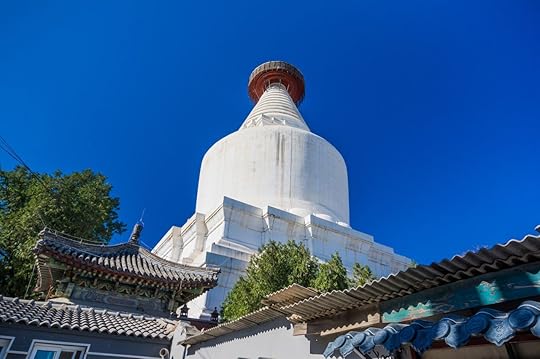
Photo: HelloRF Zcool/Shutterstock
After founding the Yuan Dynasty, Kublai Khan gave permission for a dagoba to be built in Beijing’s Xicheng District so that he could gain favor among Tibetan Buddhists and unite religion with his political power. The white dagoba is approximately 167 feet, making it the tallest Tibetan dagoba in China. It immediately draws the eye of anyone in the area and, as such, gave the temple its nicknames of “White Dagoba Temple” and “White Stupa Temple.” In addition to the white dagoba, there are four halls and a courtyard. One of the halls, the Hall of the Great Enlightened Ones, has thousands of golden Buddha statues in glass cases.
Hours: Tuesday to Sunday from 8:30 AM to 5:00 PM
Price: 20 yuan ($3)
Location: 171 Fuchengmen Inner St, Xicheng Qu, Beijing Shi, China
7. Dongyue Temple

Photo: claudio zaccherini/Shutterstock
Mountains are sacred in Chinese culture and religion. There are five sacred mountains in China, each representing a particular direction (north, south, east, west, and center). Dongyue Temple is dedicated to honoring the eastern mountain, Tai Shan, and gives off an intriguingly eerie vibe. As per custom, the main buildings are built on the central axis, with the others being evenly placed among the grounds.
An unsuspecting visitor might think nothing of the temple until they get a deeper look into its rooms, which hold peculiar-looking statues. These rooms and statues represent the 76 Departments of Death in Taoism, places that souls go to continue their eternal lives. Some examples of these are the Life and Death Department, Department of Wandering Ghosts, and the Department for Implementing 15 Kinds of Violent Death. While most of the rooms will greet you with figures of the underworld, not all is doom and gloom as some of them are dedicated to monks, worship, and prayer — such as the Department for Increasing Good Fortune and Longevity.
If you haven’t had your fill, also on the grounds is the Beijing Folk Museum. The best time to visit is during one of the annual festivals, like Chinese New Year, the Mid-Autumn Festival, and the Dragon Boat Festival, when a ton of different activities and performances are held.
Hours: Tuesday to Sunday from 8:30 AM to 4:30 PM
Price: 10 yuan ($1.45)
Location: 41 Chaoyangmen Outer St, Chao Wai, Chaoyang Qu, Beijing Shi, China 

More like this: 10 things you need to know before visiting the Great Wall of China
The post How to visit the 7 most beautiful temples in Beijing appeared first on Matador Network.

LGBTQ travel in East Asia

With the legalization of same-sex marriage in Taiwan this year in May, East Asia has never looked more progressive. As more LGBTQ-friendly venues open their doors, and laws forcing positive change come into power, the region is becoming more accessible for LGBTQ+ visitors. From the overflowing side alleys filled with bars and nightlife in Tokyo’s Nichome to the cafes and art shares in Seoul’s Jogno, these countries and their respective neighborhoods are some of the best spots for queer travelers to visit while in East Asia.
1. Taiwan

Photo: weniliou/Shutterstock
Taiwan is undoubtedly the East Asian country with the most thriving queer scene. Each October, Taipei hosts the biggest Pride festival in all of Asia. The Taiwan International Queer Film Festival runs every year and screens a wide variety of queer-produced or queer-prominent films. The Red House, also in Taipei, is a market that was built in 1908 and became a Class III Historical Site in 1997. It functions as a hub to artists and as an LGBTQ beacon. The queer community of Taipei is largely centered around this red-brick building and its surrounding neighborhood.
Cafes, bars, and clubs are spread out in the streets and open to all visitors. There’s also a large number of book stores and cultural spots that cater to queer visitors. Taipei is a busy city that successfully balances an energetic nightlife with calmer daytime options, but it’s not the only queer-friendly destination to visit in Taiwan. Other large cities such as Taichung and Kaohsiung have their own collection of LGBTQ destinations to check out.
2. Shinjuku Nichome, Japan
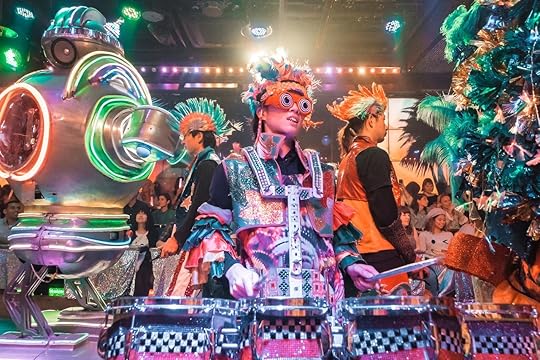
Photo: Swedishnomad.com – Alex W/Shutterstock
Japan is a visually stunning country with deep traditions and cultural pride. Natural destinations like Mt. Fuji balance the fast-paced energy that fuels major cities like Osaka and Tokyo. Japan has routinely been cited as one of the safest countries in the world, making it a destination that nearly any traveler can enjoy stress-free. Tokyo, the capital city, provides the quintessential experience of the Japanese lifestyle that travelers expect before arriving. Full of lights, odd alleyways, temples, and karaoke, it’s hard to be bored in the city.
The area of Shinjuku Nichome, or Ni-Chome, is the concentrated center of the queer scene in Japan. It has the world’s highest concentration of queer establishments with over 300 bars and clubs squeezed into a small neighborhood in Shinjuku. Shinjuku itself is Tokyo’s busiest and most crowded district, with more standing izakaya or karaoke rooms to count. While some of the stores in Nichome cater to specific orientations, many other places are open to all. Arty Farty is a longstanding classic venue, known for its pulsating music and dance-loving crowd. Most of the stores in this neighborhood are orientated around nightlife, but there are still options for dinner or a casual evening for those seeking it.
3. Seoul, South Korea
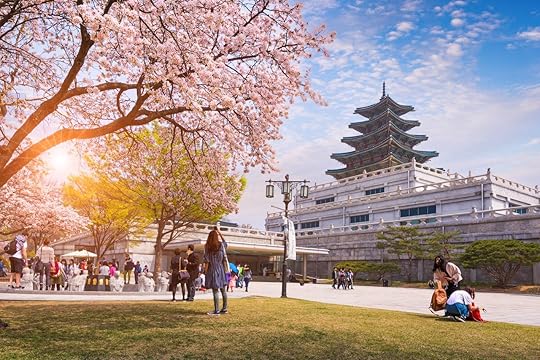
Photo: PKphotograph/Shutterstock
Seoul is a city that has developed its economy suddenly and rapidly — and it shows. It is a mix of outdated industrial apartments, sky rises, ancient palaces, and spread-out back alleys where vendors sell vegetables from the back of trucks. For queer travelers, Seoul has multiple LGBTQ-friendly neighborhoods throughout the city. Hongdae is well known for its lesbian bars. The international neighborhood of Itaewon is notorious for “Homo Hill,” a concentrated area of gay bars, clubs, and performance venues. The streets of Jongno are more laid-back and offer spots for a relaxing dinner and drinks rather than an all-night party.
Haebongchon is only a quick walk (or an even quicker taxi ride on long nights out when the walk feels insurmountable) next to Itaewon. Haebongchon is known as a neighborhood with a high concentration of English-speaking residents. Many of the shops and restaurants decide to use English signs to advertise or a mix of both English and Korean. The streets of Haebongchon are welcoming to all, especially any self-identifying queer travelers. A popular drinking destination is the Rabbit Hole, which hosts weekly drag events, monthly female (or female-identifying) nights, and even the occasional burlesque or pole performance. The space is small yet friendly, and no one bats an eye at the silver go-go boots or four-inch fake lashes some patrons prefer.
4. Major cities in mainland China
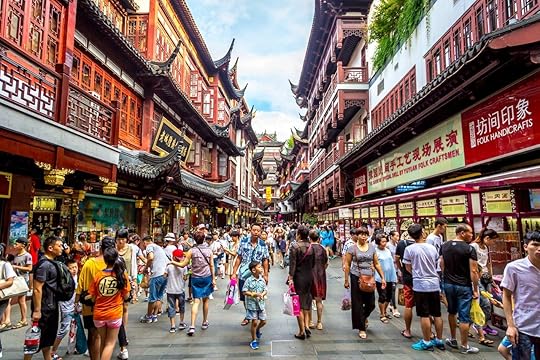
Photo: LMspencer/Shutterstock
The largest cities in China offer the most opportunities for queer travelers to go out and connect with others. Naturally, this includes international hubs like Beijing and Shanghai, where many clubs and bars cater to the queer crowd. Shanghai’s Gay Triangle is one such neighborhood with a concentrated amount of queer locations. However, the city of Chengdu also has a small yet thriving queer scene. Located in Sichuan Province, Chengdu lies inland, isolated in the center of China. The area has a large immigrant population and mix of cultural influences, making the local citizens more tolerant toward differences in belief or lifestyle. Lesbian-run cafes and monthly drag shows are only a small selection of the LGBTQ community in Chengdu, which is smaller yet more close-knit than those of some of China’s larger cities.
5. Hong Kong
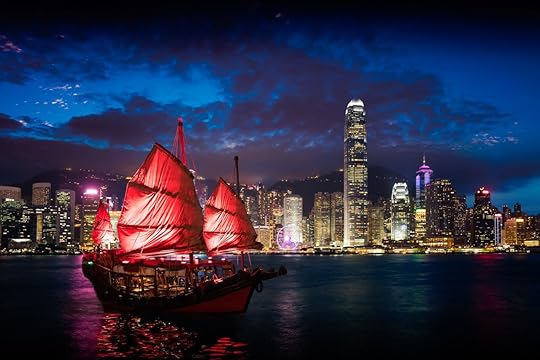
Photo: Patrick Foto/Shutterstock
Hong Kong is a small island territory of China with warm weather, delicious street food, and iconic skyscrapers that rival the scenes of Bladerunner. Set to host the Gay Games in 2022, Hong Kong is one of the most welcoming destinations in East Asia for members of the LGBTQ community. The city offers a huge range of entertainment and activities, such as gay saunas, club nights like Behind, and, of course, gay bars aplenty.
Similar to Taipei, Hong Kong hosts the HK Gay and Lesbian Film Festival annually. The city also celebrates Pink Season, a multi-week festival for queer-related events, in addition to multiple other pride events and parade days. If you are in town and fancy stretching your legs, an LGBTQ-lead walking tour of Hong Kong is a super way to explore the city with like-minded people. If you are looking for interesting discussion, check out local meet-ups and weekly discussion groups which are held in Cantonese and English. 

More like this: Taiwan becomes the first country in Asia to legalize same-sex marriage
The post The best LGBTQ spots in East Asia appeared first on Matador Network.

Backcountry trips with teenagers

Traveling with teenagers can be equally rewarding and frustrating. The experience is bound to open their eyes to different cultures and varying geographic regions and help them to have a better appreciation of the magnificent world that we inhabit. But in a generation dominated by smartphones and technology, it’s tough enough for parents to get this age group engaged in outdoor endeavors, much less separate them for an extended period from their friends. It’s possible to not only get teenagers excited about an international adventure but also evoke a sense of wanderlust at the same time. Whether you take them to trek the Inca Trail, climb Kilimanjaro, or trek to Everest Base Camp, proper planning and preparation are the keys to success. Here’s what you need to know to plan an international backcountry expedition with your teenagers.
What to do before the trip
Allow them to be a part of the planning.
Kids are no different in this regard than adults. Being involved in the decision-making process immediately gives a person more buy-in to the trip and typically makes one more enthusiastic about the end result. Allow these young adults to be a part of the process from start to finish. It might even be worth it to allow them to volunteer for part of the planning — the trip will go much smoother if it’s seen as an adventure and not a forced family vacation.
An option to bring along a friend is a strong way stoke your teenager on the trip because it gives them someone to vent and relate to during both the planning and execution. While this might not be financially possible, kids are often more resilient when a friend is allowed to tag along. It does increase the cost, but it can easily pay dividends in terms of having a smooth ride. This might be something that the friend’s parents would pay for or have wanted to do for a while but haven’t had the time or know-how to put such a trip together.
Be realistic, and consider getting a guide.
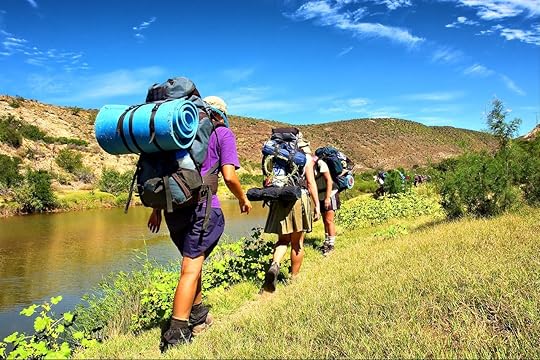
Photo: PhotoSky/Shutterstock
Some backpacking trips — the Inca Trail, for example — require guides. This is for your safety, and it is often regulated by the country in which the destination exists. But you can use this to your benefit by optimizing the trip for safety and efficiency. The guide will share information in advance of the trip, including required gear, fitness level, and often even tips for training and preparation. They’ll also point out sights along the way that you might not have known or seen otherwise. If this is your teenagers’ first international trek, the guide’s wisdom and general level of excitement for the area you’re visiting is the type of influence that can help to instill a lifelong passion not only for trekking but also proper trip planning and safety precautions, as well.
Even with a guide, however, it is important to consider your audience when planning an excursion. A guide does not increase the physical ability of your group and isn’t a substitute for proper gear or planning. If you’ve never been backpacking or hiking for consecutive days, it might not be the wisest decision to plan a two-week Everest Base Camp trek. Consider the physicality of the adventure and gauge your trip accordingly. It’s better to return with a sense of excitement and with your teenagers inquiring about the next expedition than to deter them from ever wanting to take another adventure. You also don’t want anyone getting hurt.
Gear up (and know how to use your stuff).
Purchase, borrow, or rent the necessary gear for your trip. You should research what is needed for your specific route, as well as stock up on basic backpacking supplies. It is well worth the cost to invest in quality footwear, packs, rain gear, and synthetic (or wool) apparel. Do not wear cotton in the backcountry — once it’s wet, it stays wet, and if and when it does dry, it will start to smell much sooner than its synthetic counterparts.
Don’t let the first time you put your boots on also be the first day of the trek. While most boots today don’t require a long break-in period, it is still beneficial to spend time acclimating to them prior to the trip. Put on weighted packs and become familiar with adjusting the straps. If you plan to use hydration bladders, become accustomed to using them while walking. If using water bottles, get used to retrieving them from the side pockets on the pack.
Plan a shakedown trip (or two).

Photo: Maridav/Shutterstock
On that note, a couple of local practice runs will make a huge difference in you and your teenagers’ ability to successfully interact in the backcountry. In mountaineer lingo, these are known as shakedown trips, and these overnight excursions — or just extended day trips — can allow the family to ascertain everyone’s preparedness and work out any kinks in the gear situation. It also allows everyone to get physically and mentally prepared for what is to come.
If you’re going to be wearing backpacks, make sure to place some weight in them and walk around the neighborhood or go to the local stadium and walk the bleachers. It will prepare your body for carrying a weighted pack. Don’t overestimate your fitness or that of your kids.
Get vaccinated and purchase travel insurance.
Consider visiting your physician prior to your trip and acquiring any suggested vaccinations for your intended destination. Plan accordingly as some require months ahead of departure to become valid. Also, get any necessary medications filled for your trip. You can discuss with your physician other medications that might prove advantageous to have at your disposal while abroad.
Purchasing travel insurance from one of the many reliable providers could prove to be worth its weight in gold. An unexpected fall, appendicitis, or even lost luggage can derail even the best-laid plans. Organizations like World Nomads provide insurance that covers everything from that lost suitcase to trip interruption, medical expenses, and even emergency evacuation. Travel insurance often doesn’t cost more than a few dollars per day per person, an expense worth it if only for the peace of mind.
During the trip
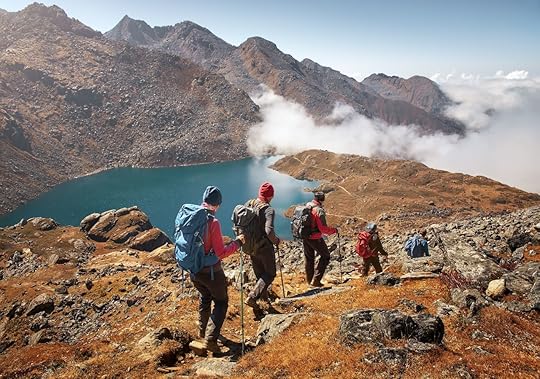
Photo: soft_light/Shutterstock
Acclimate and plan for the unexpected.
Don’t head into the backcountry immediately upon arriving. Factor in a few days on the front end at your destination to acclimate to your new surroundings. If you are coming from sea level to a city high in the Andes or traveling to the other side of the world, it takes a few days to acclimate to a change in altitude or recover from jet lag. This can also help your group work out any travel bugs or digestion issues that tend to creep up in unknown environments.
A 17-year-old may be able to carry more weight than your average 13-year-old. Be prepared to offload some of their weight into your pack if needed. Setting realistic expectations before the trip can help avert some of these scenarios, but not always. Plan to pack extra snacks in your pack — there is nothing worse than a hungry (or, dare we say it, hangry) teenager. Also, carry a battery pack to keep your devices charged in the backcountry, beneficial in recharging headlamps, camera batteries, and phones.
Allow for downtime.

Photo: Albina Tiplyashina/Shutterstock
If after a long day on the trail your kid wants to take a nap or just lay around camp, let them do it. Don’t force the extra side hike or stargazing. If, on the other hand, they initiate the activity, consider it a bonus. Aside from time on the trail, when schedules are generally planned out, allow teenagers downtime to text their friends, listen to their music, and whatever else it is that they do when not engaged. Try not to over-schedule the front and back ends of the trip because, in the end, you want this to be a positive experience and one that they will look upon favorably.
Give each kid a small notebook or have them take notes on their smartphone. Have them write down the best things about each day, along with what they learned, struggled with, or figured out. They will appreciate the memories in the years to come, and you can use some of that information post trip. With so much going on, you will forget some of the details if you haven’t recorded them on a daily basis. Banning their phones while on the trip will probably just cause unnecessary drama, so go ahead, let them take their camp selfies.
Connectivity
When traveling solo, it may be more financially prudent to call your cell phone provider to discuss international rates. When traveling as a family, it may prove advantageous to consider one of the many portable hotspot options on the market. Some require you to purchase the device and a monthly plan while others allow for renting of the device, and you only pay for the period in which you use it. A portable WiFi hotspot provides a secure WiFi connection, and most allow multiple-device connectivity. Of course, getting into the backcountry is supposed to be a break from the digital space, but for frustrated teens, a few minutes online can be a welcome recharge. This isn’t an option for every country, so make sure it will work in your planned destination.
Debriefing after the trip

Photo: Alena Ozerova/Shutterstock
After you get back from the adventure, sit down as a family and discuss the highs and lows of the trip. Find out what everyone really enjoyed and what they wish had been different. This is good information to have for future trips. Collect the best photographs taken and each person’s journal entries (as much as they’re willing to share). Use this information to put together a photo book. These can be laid out and printed online and shipped to your home, and they make for a one-of-a-kind memento that involves input and quotes from each participant. Everyone wants their thoughts and memories to stand out, and a photo book can really help that international travel bug bite your kids. Once it does, your family will likely find it hard to resist the urge to plan your next trip — sometimes the planning starts before the current trip ends. 

More like this: Why you need to take that epic trip with your toddler
The post How to plan an international backcountry expedition with your teenagers appeared first on Matador Network.

Craft beer in Rochester, New York
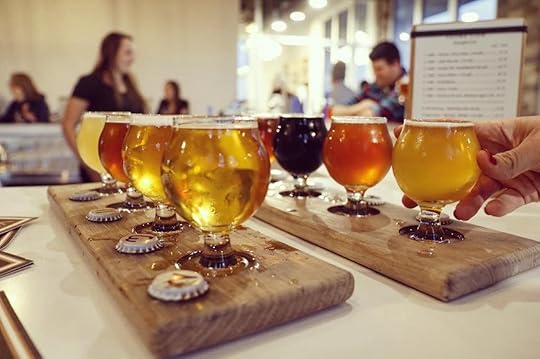
“Milkshake IPA” sounds a little like Tabasco sauce ice cream. Maybe you like both parts separately, but together it sounds gross. But, I told myself as I took a hesitant first gulp in the Roc Brewing tap house, “when in Rochester…”
Surprisingly, I liked it. A lot. Much like the city it comes from, the smooth, malty beer was unexpectedly delightful. It has hints of chocolate that cancel out any overt hoppiness, and the kind of creative flavors in beer people go to Asheville, Portland, or Boulder, Colorado, to find. Western New York? Not so much.
But hidden on the Erie Canal between Albany and Buffalo sits the hands-down best beer city in the Northeast. A one-time Kodak industry town that’s combined its spirit of education and creativity with the tradition and history of big business, Rochester has turned itself into a top-tier craft-beer destination.
Rochester, New York, and its 208,000 residents have the most breweries per capita of any city in the Northeast after Portland, Maine. That’s the 21st-most in the country, accounting for nearly 1,400 jobs and $700 million in economic impact. Monroe County, where Rochester lies, is home to 26 breweries. Extend that out to neighboring Ontario and Livingston Counties, and that number reaches close to 50.
“In New York State, when anyone launches a new beer they launch in New York City or Rochester,” says Chris Spinelli, co-founder of Roc Brewing Co. and a board member on the New York State Brewers Association. “We have that kind of market. There’s no beer I can’t get my hands on in Rochester, including the best beers in the world. That’s the kind of culture we have.”
That culture is so strong, Brooklyn’s vaunted Other Half Brewing set up its second location in nearby Bloomfield. A sign, like when Sierra Nevada opened in Asheville, that the city was officially a big-league beer town.
But like so many great things in this part of the country, its rise came from a place of ruin.
A city built on film finds a new way to shine

Photo: Roc Brewing Co. LLC/Facebook
Kodak, once the world’s largest camera and film company, employed nearly 100,000 people at its height. Most of them were in the company’s corporate headquarters in Rochester. Then along came a little thing called the digital camera, and all of a sudden nobody needed film anymore. Kodak cut jobs, and like many cities along the Great Lakes, Rochester had to find new ways to keep people working.
While other rust belt cities looked to tech, healthcare, and smart manufacturing to re-define their cities, Rochester chose to forge its 21st-century identity through beverages.
“We like to call ourselves the front door to the Finger Lakes,” says Rachel Laber Pulivno, the Director of Communications for Visit Rochester. It’s a catchy phrase from a tourism pro, but in this case it’s true. The city is about an hour’s drive from New York’s top wine region, and Rochester’s newly renovated airport is easily the closest.
”You saw Rochester plummet as far as tech was concerned,” says Dean Jones, Brewmaster at Genesee Brewing, the city’s legendary macro-brewer that sits right on the river of the same name. “But the resurgence it’s had has locked on to wine in Finger Lakes as well as beer.”
To wit, the city also boasts a number of urban wineries like Living Roots, which has another tasting room in Australia. Then there’s the new distillery near the massive public market at Black Button.
But nothing has propelled Rochester to the forefront of the national conversation like beer. And much of that is thanks to its biggest player.
A mega-brewery births a micro-brew culture
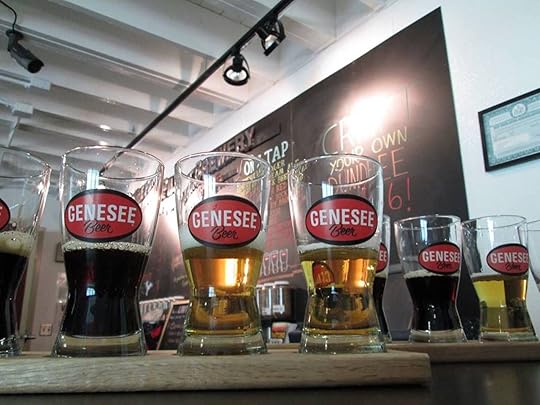
Photo: Genesee Brew House/Facebook
“When I started brewing, there were maybe 30 brewers in America,” Jones says of his early days in beer. “If I had a question, who was I gonna call?”
Knowing how important resources are to a fledgling brewery, Jones and the team at Genesee have opened their doors to smaller, new breweries in a way seldom seen in any industry — even the collaboration-filled beer world.
“Better beer means better things for our city,” says Jones, whose brewery also hosts educational programs for aspiring brewers. “We opened a tasting panel training, we’ve even given yeast to brewers. I try and help them out as much as I can. It’s kinda cool; I love helping these guys. Andy (Cook) from Swiftwater has said he wouldn’t be open if it wasn’t for the Genesee Brewery.”
Genesee’s sparkling new tap house sits right across from High Falls in downtown Rochester, and on a sunny day you can enjoy its iconic Cream Ale or seasonal sensation Grapefruit Kolsch on the patio while listening to the sound of cascading rapids. People lunching on the balcony take pictures of an engraved Genesee glass with the falls behind. If Rochester has an Instagram moment outside the garbage plate, this is it.
But beyond the tourist-friendly setup, Genesee plays a much deeper role in the city’s beer culture. It opens up its labs to brewers to come and experiment with different styles and plays a major role in 585 Brewers Collaboration, where local brewers work together to improve the city’s scene.
Rochester did craft beer before it was cool.

Photo: Rohrbach Brewing Company/Facebook
That craft beer scene is a lot older than most American cities’, too. Genesee has been around since 1857. Rohrbach Brewing opened its doors in 1991. CB Craft Brewers in 1997. The last two were started by former Kodak employees. Roc Brewing followed suit in 2011, helmed by Rochester Institute of Technology grad Chris Spinella.
With three solid craft players plus a regional powerhouse in Genesee, the people of Rochester were familiar with craft beer long before it hit the mainstream.
“Frontier Field embraced craft beer 20 years ago,” Rohrbach founder John Urlaub says, speaking of the city’s AAA baseball stadium. “There were national articles that would come out about Rochester saying, ‘Why can’t we get craft beer into pro stadiums?’ A lot of people got to know craft beer because they went to a ball game. And that didn’t happen in other places.”
The population was primed for craft beer, so Rochester was in perfect position to become a craft beer mecca when laws changed to make brewing in New York streamlined.
“The Farm Brewing Law in 2012 made it exponentially easier to get a brewing license,” explains Will Cleveland, beer columnist for the Rochester Democrat and Chronicle. “It requires people to use 60% of their hops and 60% of other ingredients from New York State. That put the impetus onto farmers to grow hops.”
The newly minted “farm breweries” found it much simpler to open their doors and were further bolstered by 2016 legislation that allowed breweries to sell full glasses of beer on premises. The result has been a record number of breweries opening in the state, upwards of 450 at the time of publication. As Rochester already had its feet in the door, so to speak, it was ahead of even New York City when the laws were relaxed.
A welcoming, creative place makes a welcoming, creative beverage
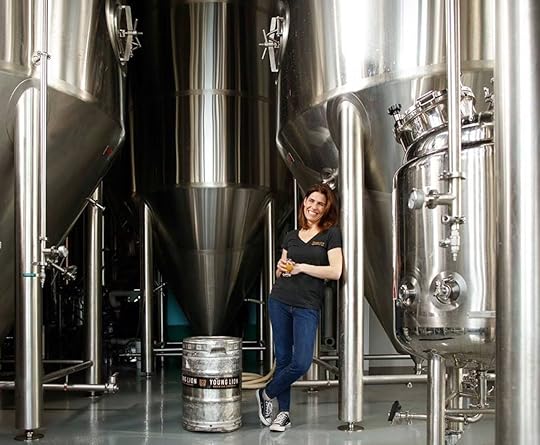
Photo: Young Lion Brewing/Facebook
Of course, beer doesn’t make itself, and the people of Rochester are still the biggest reason it’s become a perennial beer A-lister.
“Rochester has a history of activism, with Susan B. Anthony and Frederick Douglass, and philanthropy with George Eastman,” says Jennifer Newman, co-founder and CEO of Young Lion Brewing. She is part of the 3% of the craft beer industry owned by women, and her Canandaigua tap house has an impressive lineup of IPAs. “The community is just very kind and welcoming, and when you layer the beer community on top of that, the two groups fit perfectly together.”
Newman also points out that as an educational center, the city naturally produces the kinds of minds needed for great beer.
“We have an incredibly high per capita secondary education rate. University of Rochester is a huge employer. RIT is here,” she says. “In brewing you have to be a chemist, a botanist, manage operations. That concentration of higher ed helps. We also at one point had a higher per capita of artists than New York City.”

Photo: Silver Lake Brewing Project/Facebook
Rochester’s culture of creativity has helped it develop some highly unusual beers too. That Milkshake IPA can be found at a few spots around the city. Stoneyard Brewing makes an Abbot’s Custard chocolate almond custard stout in partnership with an iconic beachside custard stand. I tried an apple pie IPA at Rohrbach, which also makes a Neapolitan ice-cream beer.
“Everyone here is so collaborative and creative,” says Genesee’s Jones. “It’s becoming the North Carolina of the Northeast.”
Somehow, the beer-drinking world hasn’t quite started beating a path to the shores of Lake Ontario. Newman said she’s had visitors from all over the US who’ve stopped in because they love to do beer tours. But Bend, Oregon, it is not.
“We’re a little behind,” says Cleveland of Rochester’s beer tourism. “You’ve seen growth in other destinations, but we’re starting to catch up.”
Sitting along the Erie Canal on a sunny Saturday afternoon at Lock 32, enjoying a Dewitt’s Ditch Belgian Wheat while boats cruise by on the water, it’s hard to imagine a more perfect city to experience through beer. Earlier in the day I’d strolled the massive public market, sampling empanadas, doughnuts, and fresh-pressed juices before saddling up to the bar at Rohrbach. I’d had the requisite lunch on the patio at Genesee and enjoyed an afternoon of hiking the Grand Canyon of the East at Letchworth State Park, followed quickly by a flight at Silver Lake Brewing Project. It might not be the first place you think of as great American beer destinations, but like the Milkshake IPA, Rochester will definitely surprise you. 

More like this: The ‘Garbage Plate’ might be New York’s most underrated food
The post Rochester has reinvented itself as the Northeast’s best beer town appeared first on Matador Network.

Best dessert in Sri Lanka
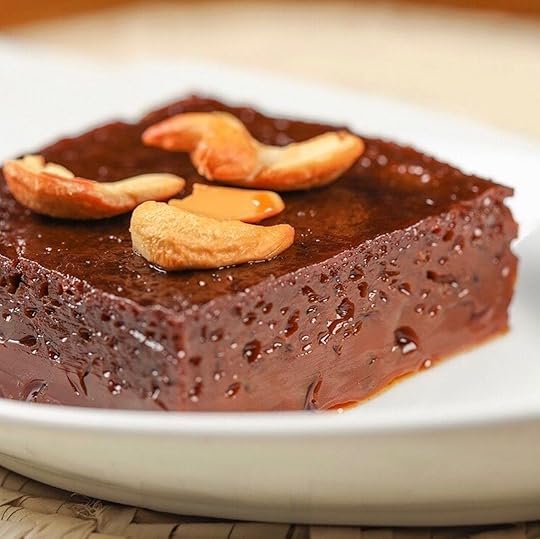
Sri Lanka is a melting pot of cultures, all of which add to the island’s culinary delights. Sri Lankan cuisine resembles that of Southern India but is usually spicier — both in heat and the sheer amount of spices used. While rice and curry is probably the best-known classic Sri Lankan dish, there’s one treat popular in the country that’s much more iconic: watalappan.
Watalappan is a sumptuous custard dessert that’s quintessentially Sri Lankan. It’s made with coconut milk, eggs, a type of sugar called jaggery, and a hint of spices such as cardamom, nutmeg, and cloves. The mixture is usually steamed for 45 minutes to one hour using a clay furnace or pressure cooker and is glazed with palm-sugar caramel. Locals often top it off with roasted cashews to add a fresh crunch. Other times, especially at Moor weddings, watalappan is garnished with caramelized bananas. Locals use kolikuttu, a type of Sri Lankan banana that’s stout and plump with an inviting aroma.
Brown in color, the tropical favorite shares similarities to Spanish flan. Watalappan’s history is believed to go back to the first Malay settlements in Sri Lanka. The name for the dessert during Dutch colonial rule in the early 1700s was vla, which is the Dutch word for custard. The present-day name watalappan comes from the Tamil term vattil-appan, which loosely translates to “cupcake.”
Watalappan is traditionally prepared by the Muslim community in Sri Lanka, but it’s a dish enjoyed by everyone no matter their religion, race, ethnicity, or social class. The soft-as-silk dessert often makes an appearance during festive occasions like weddings, corporate lunches, and birthday dinners in every community.
Simply put, watalappan is the heartbeat of the nation. The juicy dessert brings joy and unites communities. During the holy month of Ramadan, members of all communities eagerly look forward to Eid. On the day of Eid, the Muslim community prepares watalappan as a celebratory dessert shared with friends, colleagues, and neighbors.
The key ingredients for the perfect watalappan

Photo: DESIGNFACTS/Shutterstock
The best Watalappan, when steamed to perfection, has a smooth, silky inside filled with tiny holes that ooze palm sugar syrup. To keep the flavors authentic, one has to use kithul palm jaggery, which is extracted from the kithul palm tree flowers that grow abundantly in the wetlands of Sri Lanka. The nectar is air dried until it turns into a sweet block of palm sugar that’s deep brown, unrefined, and unbleached.
The sweet dish has delicate notes of spices like cardamom, nutmeg, and cloves. The spices add a strong taste and exquisite aroma when ground and added in small amounts to carefully enhance the flavor. Another key ingredient is proper coconut milk. To prepare thick, creamy coconut milk, one has to grate coconuts and then tightly squeeze it in your hands with a little water. Fresh coconut milk gives watalappan richness and its consistency.
Where to find watalappan in Colombo, Sri Lanka

Photo: Upali’s by Nawaloka/Facebook
Watalappan is not an everyday staple, so don’t expect to find it in every hole-in-the-wall in Colombo, or elsewhere in Sri Lanka. You’ll find this sweet temptation packed into a tiny transparent plastic box in supermarkets, but commercially produced watalappan can rarely compete with the authentic taste. First off, commercial watalappan is baked, not steamed. Baking doesn’t create the same texture. Some restaurants in Colombo, however, thrive on home-cooked Sri Lankan cuisine, and watalappan is a must-have in their lunch menus or dessert spreads. These are the best places in the city to give it a try.
Upali’s Colombo: A large, family-friendly, and slightly upscale restaurant in the heart of Colombo. The restaurant was once a residential house and still has a welcoming vibe to it. It sits next to the tree-clad Viharamahadevi park and has both indoor and outdoor seating. Upali’s Colombo serves watalappan every day. Come for lunch and feast on rice and curry before you finish it off with a generous serving of watalappan topped with crunchy cashews.
Al-Maas Indian Family Restaurant: This popular joint is located on Marine Drive. It’s always busy with hungry customers. Have the chicken biryani for dinner and end with a caramel-glazed bowl of watalappan for dessert.
Galle Caterers: This catering service is one of the region’s most popular. Galle Caterers operate every day in Dehiwala, a suburb in Colombo. Order the sawan, a large silver plate of biryani for four or five people. Galle Caterers is famous for the ghee-oozing chicken sawan, which comes with a pot of deep brown, homemade watalappan for post-biryani sugar cravings. 

More like this: 10 unmissable experiences that will put Sri Lanka firmly on your bucket list
The post Watalappan is the Sri Lankan dessert that’s impossible not to love appeared first on Matador Network.

Matador Network's Blog
- Matador Network's profile
- 6 followers



